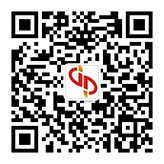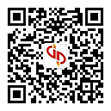试卷简介
试卷预览
Passage 1
The debate about the origin of Stonehenge's(英格兰巨石阵)grandest lumps of rock had been raging for at least four centuries. Now, thanks to the recovery of a chunk of the monument that had been lost for decades, archaeologists have finally been able to reveal where they came from.
The research shows that the giant sarsen(砂岩)stones were gathered,some 4,500 years ago, from the West Woods, a site covering square miles on the edge of Marlborough Downs in Wiltshire. It is about 15 miles north of Stonehenge and it seems likely that its nearness made it attractive.
Susan Greaney , a historian for English Heritage, said :"We can now say that when
sourcing the sarsens, the dominant objective was size-they wanted the biggest, most substantial stones they could find and it made sense to get them from as nearby as possible. "
The breakthrough was made possible by the discovery of a metre - long core of rock that was drilled from a stone during a restoration in 1958. The project had involved three sarsens that had fallen more than 150 years earlier being dragged upright and made stable.
Robert Phillips worked for a company asked to drill through one of the stones so that it could be pinned into place with a metal bracket. He was allowed to take the core home. lt hung on his wall ,in a tube, for 60 years, accompanying him to Florida when he moved there. When Mr Phillips recently passed away his family offered to return the core. This gave researchers the chance to analyse material from the interior of a monument closely guarded as a World Heritage Site.
There are thought to have been about 80 sarsens at Stonehenge originally and 52remain. They include the 15 stones of Stonehenge's central horseshoe ,the uprights and beams of the outer circle, as well as outlying stones. While the smaller bluestones had been traced to specific locations in the Preseli Hills in Wales, the source of the larger sarsens had been impossible to accurately identify until now.
Ms Greaney said : "To be able to locate the area that Stonehenge's builders used to source their materials around 2,500 BC is a real excitement. Now we can start to understand the route they might have travelled. "
A.It has recently been settled
B.It has lasted for four decades
C.It attracts visitors to Stonehenge
D.It is the fiercest debate in archaeology
A.Their age
B.Their size
C.Their color
D.Their shape
A.It underwent a restoration
B.Three of its sarsens suddenly fell
C.The research on it was started
D.Some of its sarsens went missing
A.He told his children to sell the core to a museum
B.He played a role in discovering the sarsens' origin
C.He moved to Florida due to his financial difficulties
D.He continued to work as a driller after his retirement
A.It is still unknown why Stonehenge was constructed
B.Stonehenge's builders struggled to source the stones
C.Fifteen sarsens of Stonehenge were found in Wales
D.The route the stones travelled has yet to be known
Passage 2
Next time you are struggling to fall asleep, try counting penguins instead of sheep. Doing so could help us see how the birds are being affected by threats like climate change.
Tom Hart at the University of Oxford and his colleagues are constantly capturing photographs of penguins through a network of about 140 remote cameras planted across Antarctica(南极洲). There are far more images than the researchers can process on their own, so Hart and his team set up a project called Penguin Watch.
Through the project's website, you can join more than 1 million citizen scientists who have participated so far and help the team by flicking through photographs online and clicking wherever you spot a penguin. You will be asked to mark adult penguins, chicks and eggs in the images ,by clicking on the center of each one.
I found it surprisingly addictive. You can also keep an eye out for other seabirds that might appear and mark these for researchers to identify later. In addition to providing clues about how these animals are behaving and interacting with their changing environment, your work will also help the team to train artificial intelligence, which is increasingly allowing the group to process picture assessing automatically. " We now process about half of it," says Hart. The team still relies heavily on volunteers, though , especially to help spot unusual things, such as new species, he says.
Hart and his colleagues also regularly visit Antarctica and other penguin breeding sites in the southern hemisphere to take images with flying drones(无人机)and to collect penguin faeces(粪便),which they then analyse in the laboratory to gain further insights.
Early results from the project are revealing some of the challenges that various penguin populations are facing as their environment changes. Nest flooding, for example, may reduce survival of eggs and chicks. In a recent study, Hart and his team found that heavy snow events overlapped with declines in numbers of gentoo penguin chicks.
Melting ice in Antarctica also poses a threat. " On the Antarctic peninsula, Adélie penguins and chinstrap penguins are doing very badly," says Hart. Populations of ice-loving penguins like Adélies and chinstraps are likely to continue to decline, he says, whereas gentoo penguins, which tend to prefer an environment with less sea ice and more exposed rock, may fare better.
Penguin Watch and other research efforts should help to give a clearer picture of how individual colonies are responding to climate change, as well as to other pressures.
A.It asks participants to process penguin images online
B.It trains researchers to protect the environment
C.It studies new ways to help prevent sleeplessness
D.It invites volunteers to take photos of penguins
A.It was depressing
B.It was fascinating
C.It was exhausting
D.It was challenging
A.process penguin picture assessing
B.collect penguin faeces for analysis
C.find new penguin species
D.count penguin chicks
A.Melting ice
B.Heavy snow
C.Exposed rocks
D.Buzzing drones
A.To show a way of photographing penguins
B.To illustrate the rich variety of penguins in Antarctica
C.To develop advanced technologies for penguin protection
D.To draw people's attention to the environmental threats to penguins
Passage 3
We often hear about work life balance-having a good balance between work and personal time. While this may sound like a smart idea, it can also imply we should dedicate at least half of our time to work and sacrifice time for our "personal life". To me, that seems off balance. Because, the truth is, it's nearly impossible to split your time equally between the two. And, you may end up stressing out if you're not able to meet that expectation of balance. Why not think of having work life harmony instead?
With this mindset, you can actually integrate work into your life in a way that feels more complete. This way, you don't need to view work and having personal time as separate. The difference between work life balance and work life harmony is pretty simple. With the former, there's an implication that you have to sacrifice your "life" for work But, this is the worst way to go about things! How can you truly beat peace in life if you dread eight hours of your day? Work life harmony, on the other hand, allows your work to be a part of your life. This means you can choose to be happy both at home and at work.
Just take Jeff Bezos, CEO of Amazon for example. He uses a non-traditional approach to work by making time for breakfast every morning with his family, doesn't set his alarm before going to bed, schedules surprisingly few meetings, and still puts aside a few minutes every day to wash his own dishes. He believes that all his staff should stop trying to achieve a "balance" in their work and personal lives.
Now, when we think of striking a balance, we usually associate it with time, don't we? How much time are we spending at work versus how much time are we spending in our personal lives? This is the so-called balance that many struggle with. With work life harmony, we learn to rethink time management. Managing your time is important in achieving that work life harmony. But, perhaps of greater importance, is loving what you do in life. One of the most effective ways to achieve a work life harmony is to really enjoy , or find a purpose, in what you do for a living.
A.It is a dangerous practice
B.It is a worthwhile undertaking
C.It is a nearly impossible mission
D.It is a highly reasonable expectation
A.Make work and life well-combined
B.See work and life as independent
C.Keep a peaceful state of mind
D.Dedicate more time to work
A.Neglecting the difference between work and life
B.Working hard at the cost of personal life
C.Viewing work as an integral part of life
D.Seeking happiness from work and life
A.Following traditional rules is desirable
B.Achieving a work life balance is important
C.A work life harmony can be achieved
D.Schedule arrangement should be prioritized
A.To really enjoy in work
B.To set long-term goals
C.To balance personal needs
D.To rethink time management
Passage 4
With three minutes left in a game between the Los Angeles Lakers and the Boston Celtics , LeBron James hits a 3-pointer,causingthe announcer to note "the score is 89-85,a 4-point differential. "Cars have differentials, but do basketball scores have differentials? Why not instead use the simple word "difference?" What attracts this announcer to the word "differential?"
The same thing, I suppose, that attracts television news reporters and newspaper journalists to the word "replicate, "when copy will do nicely. The same people are also likely to reach for "recalibrate, "when what they have in mind is usually nothing more than "reconsider. "
Why are people, especially many who make their livings through the use of language, attracted by these and so many other hollow words? Those who use these imprecise words must feel a happy sense of possessing a rich vocabulary . Lacing their own speech and writing with these new words makes them feel not only well-informed but educated.
The words also happen to be examples of what H. W . Fowler , author of "A Dictionary of Modern English Usage,"called"novelty-hunting(猎奇),"or "the casting about for words of which one can feel not that they give one's meaning more intelligently or exactly than those the man in the street would have used in expressing the same thing, but that they are not the ones that would have occurred to him. " Fowler thought the use of such words a "useful outward sign of inner dullness. "His advice was to avoid such people, but, he added, "unluckily they hunt in packs. "
Words have their vogues(流行性). Fowler again:"Every now &then a word emerges from obscurity(含糊),or even from nothingness or a merely potential & not actual existence, into sudden popularity. . . Ready acceptance of vogue words seems to some people the sign of an alert mind; to others it stands for the herd instinct &lack of individuality. "
The close observation of language, pressing words for exact meanings, has always been important, but has become even more so since the rise in significance of the news media in politics. In the corruption of language, the media, to do a bit of novelty-hunting, make for an everyday superspreader event.
Language changes and change is the first rule of language . But there's good and bad change, and to allow language to wander off into obscure realms is to sacrifice accuracy of communication and give up hope of discovering the truth about politics or indeed about human affairs generally.
A.There is a new rule for reporting scores in sports
B.There is a popular concern for the careless use of language
C.People working in the press often invent words and expressions
D.People seek complex rather than simple words to express themselves
A.They intend to seek some inspiration
B.They intend to conceal their character
C.They intend to express their happiness
D.They intend to gain others' admiration
A.They are prone to avoid communicating with other people
B.They are ready to polish the words used by ordinary people
C.They are keen to use the words that may not occur to others
D.They are eager to teach how to use words properly in speech
A.One who follows others in word use
B.One who shows creativity in word use
C.One who pursues perfection in word use
D.One who tries different ways in word use
A.The variety of communication styles
B.The improvement of language skills
C.The acceptance of language change
D.The precision of communication
Passage 5
The appeal of self-driving cars seems obvious: just relax and enjoy the ride. But how will life change when entire communities embrace them? Anew town in Essex is the first in Britain to be built for the revolution. Chelmsford Garden Village, which will grow to about 10,000 homes, is future proofing itself for a world in which driverless cars are the norm.
In the early phases, there will be parking spaces near the houses. However, these will gradually be converted to new uses, such as public gardens, and residents will instead be able to summon driverless vehicles from a car park in the suburbs of town. When they are finished, the cars will return themselves.
Jeremy Potter, city planning manager at Chelmsford city council, said:" If you've only got a certain amount of space,you want to maximize(最大化)it for things that are really useful . A car is only useful for a person when they're using it. The rest of the time, it's just taking up space, on the road or drive, which could be reimagined for trees, play space. "
The planned garden village is near a large park and ride site. "This allows the residential environment to be free of cars, "Potter said. The first phase of the development, with 4,350 homes, will have a railway station and rapid bus service ,and is being designed as a "15-minute neighbourhood" with amenities(便利设施)in easy walking and cycling distance to cut short car journeys. Building of the next 5,500 homes will begin in the mid-2020s.
Moves are under way to reduce car dependence across the country because of fears that planners are forcing developers to pave over garden space for parking. Research by Create Streets, a social enterprise, found some councils require three parking spaces for a four-bedroom house near a railway station. Others insist on at least two spaces for a property with three or fewer bedrooms.
Nicholas Smith, chairman of the government's Building Better , Building Beautiful commission ,said:" We are forcing people in new developments to take car parking places they increasingly won't want or need. It's ridiculous. It should be for homeowners to decide what is needed, not for artificial parking levels to be imposed.
"Parking places should be removed in the future world of car clubs and easy green transport. It will rarely be necessary for new homes to have permanent parking places in town or city centres, and not more than one or two in suburbs or countryside. "
A.It will have about 10,000 homes
B.It was built for driverless cars
C.Driverless cars are forbidden there
D.Every home there has a self-driving car
A.Beside the public gardens
B.Under the ground
C.Near the houses
D.In the suburbs
A.Cars
B.Trains
C.Buses
D.Bikes
A.People have a great need for more garden spaces
B.Parking places for houses occupy much space
C.People rely heavily on cars in everyday life
D.Parking places are neglected by developers
A.They are insufficient
B.They are inaccessible
C.They are inexpensive
D.They are unnecessary

 最新推荐
最新推荐
 相关试卷
相关试卷

 原创试题专区
原创试题专区 开通学校服务
开通学校服务







